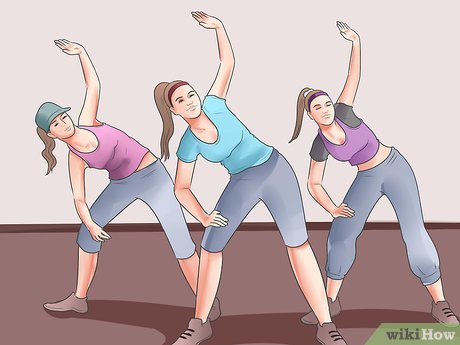- Empty cart.
- Continue Shopping
The Role of Endorphins in Pain Relief

Pain is a universal human experience, and finding effective ways to manage and alleviate it has been a constant pursuit throughout history. One fascinating aspect of pain relief is the role played by endorphins, the body’s natural painkillers.
What Are Endorphins?
Endorphins, short for “endogenous morphine,” are neurotransmitters produced by the central nervous system and the pituitary gland. These remarkable chemicals serve as the body’s natural painkillers and mood elevators. When released, endorphins bind to specific receptors in the brain, leading to reduced pain perception and a sense of well-being.
The Mechanism of Endorphins in Pain Relief
Endorphins primarily function as analgesics, which means they diminish the perception of pain. They achieve this through a complex mechanism involving receptor binding and signal modulation:
- Receptor Binding: Endorphins bind to specific receptors in the brain called opioid receptors. These receptors are part of the body’s natural pain management system and are found throughout the central nervous system.
- Pain Signal Inhibition: When endorphins bind to opioid receptors, they inhibit the transmission of pain signals. This interference reduces the perception of pain in the brain, making you feel more comfortable.
- Feel-Good Sensation: Endorphins not only reduce pain but also promote a sense of well-being and happiness. This dual action makes them valuable for both physical and emotional pain relief.
Natural Ways to Boost Endorphin Production
Harnessing the power of endorphins for pain relief doesn’t always require medication. There are several natural ways to stimulate the production of these “feel-good” neurotransmitters:
1. Exercise
Regular physical activity is one of the most effective ways to trigger the release of endorphins. Whether you’re running, cycling, swimming, or practicing yoga, exercise can significantly boost endorphin levels. This is often referred to as the “runner’s high,” a euphoric feeling experienced after a strenuous workout.
2. Laughter
Laughter truly is the best medicine. It has been shown that laughing triggers the release of endorphins. Consider watching a funny movie, attending a comedy show, or spending time with friends who make you laugh.
3. Meditation and Mindfulness
Practicing meditation and mindfulness techniques can promote endorphin release and reduce pain perception. These practices promote relaxation and a sense of inner calm, which can be especially beneficial for chronic pain management.
4. Listening to Music
Listening to your favorite music, especially upbeat and cheerful tunes, can stimulate the release of endorphins. Music has a powerful impact on emotions and can serve as a natural mood enhancer.
5. Chocolate
Yes, you read that right—chocolate can boost endorphin levels! Dark chocolate, in particular, contains compounds that trigger the release of these neurotransmitters. However, moderation is key, as excessive chocolate consumption can have adverse effects on health.
6. Spicy Foods
If you enjoy spicy cuisine, you’re in luck. Spicy foods, such as chili peppers, contain capsaicin, a compound that can trigger the release of endorphins. Just be cautious if you have a sensitive stomach!
The Role of Endorphins in Pain Management
Understanding the role of endorphins in pain management is crucial for individuals dealing with chronic pain conditions. Here are some key points to consider:
1. Natural Pain Relief
Endorphins offer a natural and effective way to alleviate pain without the need for pharmaceutical painkillers. By engaging in activities that promote endorphin release, individuals can reduce their pain perception and improve their overall well-being.
2. Complementary Therapy
Endorphins can complement other pain management strategies, such as physical therapy, acupuncture, or chiropractic care. Integrating activities that boost endorphin production with these treatments may enhance their effectiveness.
3. Emotional Well-Being
In addition to pain relief, endorphins play a crucial role in emotional well-being. They can help reduce symptoms of anxiety and depression, which are often associated with chronic pain conditions. This dual benefit contributes to an improved quality of life for individuals dealing with pain.
Endorphins and Exercise
Exercise is one of the most potent ways to trigger the release of endorphins. Here’s how it works:
- Aerobic Exercise: Activities like jogging, cycling, and swimming increase your heart rate and breathing. This triggers the release of endorphins, which is often referred to as the “runner’s high.” The feeling of euphoria and reduced pain perception can last for hours after exercise.
- Strength Training: Resistance exercises, such as weightlifting, also stimulate endorphin production. The effort and exertion involved in strength training can lead to a sense of accomplishment and an endorphin release.
- Consistency Matters: Regular exercise is key to maintaining higher endorphin levels over time. Creating a consistent workout routine can help manage chronic pain and improve overall well-being.
Endorphins and Pain Disorders
Endorphin-based pain management strategies can be particularly beneficial for individuals with chronic pain disorders, such as fibromyalgia, arthritis, or migraines. Here’s how endorphins can make a difference:
1. Fibromyalgia
Fibromyalgia is a condition characterized by widespread musculoskeletal pain and tenderness. Regular exercise and activities that boost endorphin production can help reduce pain and improve sleep quality for individuals with fibromyalgia.
2. Arthritis
Arthritis causes joint inflammation and pain. While exercise may seem challenging for arthritis sufferers, low-impact activities like swimming or tai chi can stimulate endorphin release without putting excessive strain on the joints.
3. Migraines
Migraine headaches can be excruciatingly painful and debilitating. Engaging in relaxation techniques, such as meditation and mindfulness, can help trigger endorphin release and reduce the severity of migraine attacks.
The Psychological Aspect of Endorphins
Beyond their physical effects, endorphins have a profound impact on your mental well-being:
1. Stress Reduction
Endorphins act as natural stress relievers. When you engage in activities that boost endorphin production, you’ll likely experience reduced stress levels and an improved ability to cope with life’s challenges.
2. Mood Enhancement
Endorphins are often referred to as “feel-good” chemicals for a reason. They can elevate your mood and create a sense of happiness and contentment. This is especially valuable for individuals dealing with chronic pain, as it can counteract the emotional toll of persistent discomfort.
In Conclusion, Endorphins are a remarkable part of the body’s natural pain management system. They not only reduce pain perception but also enhance mood and overall well-being. By incorporating activities like exercise, laughter, and mindfulness into your daily routine, you can naturally boost endorphin production and improve your pain relief strategies. For individuals with chronic pain conditions, understanding the role of endorphins offers a holistic approach to managing both physical and emotional aspects of pain.
Incorporating endorphin-boosting activities into your life can be a game-changer. Whether you’re dealing with chronic pain or simply seeking ways to enhance your overall well-being, harnessing the power of endorphins is a natural and effective approach to pain relief. So, lace up those running shoes, enjoy a good laugh, or savor a piece of dark chocolate – your body and mind will thank you for it.








